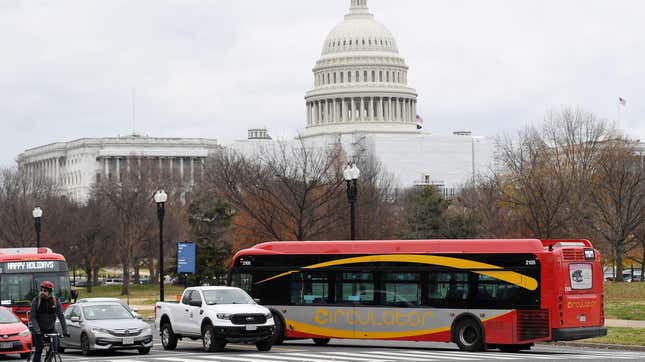
There’s been a national push, in recent years towards improving public transit. As the NUMTOT movement grows, that “improvement” often means one specific action: Making transit more accessible by making it free. Now, in Washington, DC, that very plan is being considered — but it’s running up against plans to improve bus service.
In case you missed it:
- The 15 Luxury Vehicles That Get the Best Gas Mileage in 2023
- Cadillac is Finally Reeling in New, Young Buyers, Only to Annoy Them
- These Are Your Favorite Vehicles in Anime History
The debate is focused around DC’s proposed K Street Transitway, an effort to modernize one of the city’s major roads. The proposal includes dedicated bus and bike lanes, new bus stations, and other improvements meant to make the street more efficient and safer. But a contingent within local government wants to put the money allocated for the K Street Transitway towards fare-free buses, and both sides seem to make strong points in their favor.
Fare-free buses would improve public transit access within the nation’s capitol, where 16.5 percent of the population lives below the poverty line. That means mobility and improved access to healthcare and work opportunities for people who may not be able to get it anywhere else.
But the Transitway effort, too, has benefits. It encourages walking and and biking, modes of transport that would have massive impacts on both congestion and the environment if more broadly adopted. It’s a rare sight in local government — a debate where both sides actually seem to be raising good, salient points.
Both sides, however, admit to the tradeoff. DC gets to pick between free transit and a more efficient, modern road design that promotes alternative modes of transit. Without more money invested in the city’s transit infrastructure, it will always be one or the other.